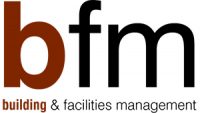Five Tips: Cutting Energy Spend, Efficiently
 By Joan Vidal, Energy Solutions Development Leader at Honeywell Building Solutions
By Joan Vidal, Energy Solutions Development Leader at Honeywell Building Solutions
When it comes to improving your building’s efficiency, knowing where to start and how to maintain a successful, long-term programme can prove challenging given the array of systems and processes that impact energy use. Robust energy management is about striking a balance between business needs and operational effectiveness. This entails taking a holistic view at how energy is both consumed and purchased, and the resulting gains can be significant.
Here are five things to keep in mind as you look for savings beyond the lights:
-
View your building as an interconnected ecosystem that should run in sync
Ballasts, bulbs and thermostats are just the tip of the spear. The building is an extensive collection of equipment that should all be working in concert. By viewing it as a living ecosystem, you’ll be better equipped to gather, analyse and act on data. You can then uncover connections between the building’s performance, comfort, safety and energy costs to make more informed adjustments in the future.
-
Understand your utility’s pricing structures and available incentives
Utility pricing, tariff mechanisms and incentives for participating in programmes, such as the UK National Energy Efficiency Action Plan,that help solve transmission and distribution issues all present opportunities to trim your spend. Understanding how you pay for energy gives you the ability to develop and implement strategies for things like peak pricing, points in time that can make or break an energy management programme. Even if you’re using an outside consultant, stay informed and engaged.
-
Establish your base and peak load benchmarks
To better respond to external factors like utility pricing, take an inventory of your building equipment and establish a baseline of performance at all times of the day. Improving efficiency is all about determining how to manage a building’s base load and making adjustments when grid-wide energy use and costs peak. It’s not one or the other.
With this insight, you can ensure your building is only using the amount of power necessary at specific times, helping to squeeze out as much energy savings as possible.
-
Don’t ignore the obvious when looking for improvements
In your busy day-to-day life of managing a building, it’s easy to fall into a mode of responding to the most urgent needs and overlooking seemingly minor tweaks. However, what initially looks insignificant can potentially be a gold mine for energy savings. Take HVAC system alarms for example which are so routine they’re often ignored. These alarms, however, not only highlight a concern that needs near-term attention, but analysed in aggregate they can show patterns that indicate much larger issues and opportunities.
Using technology to your advantage can ensure you don’t overlook the obvious. And now, cloud-based software like Honeywell Attune can help ease the burden of synthesising data generated by your building and accelerate the discovery process to provide smart, targeted recommendations for efficiency improvements.
-
Assume energy efficiency opportunities are always available
While it’s true that a newer building may not have as many savings opportunities as an older building — or one that’s been poorly managed — all buildings will display some level of degradation, and steps can be taken to mitigate or slow that process. It’s important to adopt the mindset that there are energy-efficiency opportunities in all buildings. For example, we’ve seen new buildings that weren’t properly commissioned from the outset. As a result, we uncovered significant efficiency opportunities, catching what was initially missed.
Whether you’re managing a school campus or in charge of a hospital site, improving energy efficiency is likely an ongoing theme in your daily operations. Use these pieces of advice as a starting framework to give these efforts the necessary, holistic attention they deserve.
However, also keep in mind that improving efficiency is more than just following a series of steps. It takes establishing a culture that believes there’s always a better way to do things — and a culture that is committed to uncovering the insights necessary to make those improvements.





